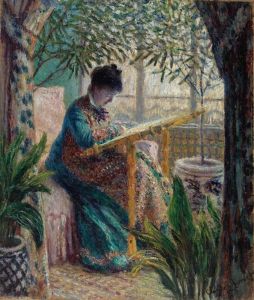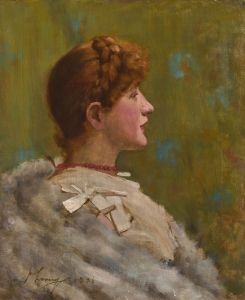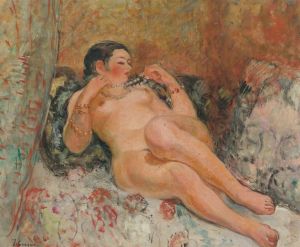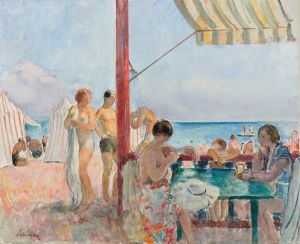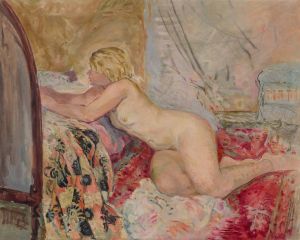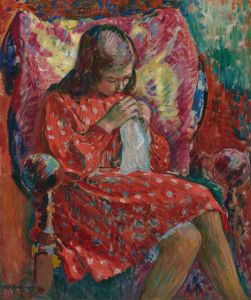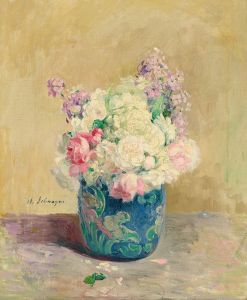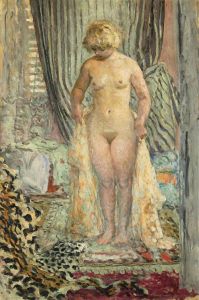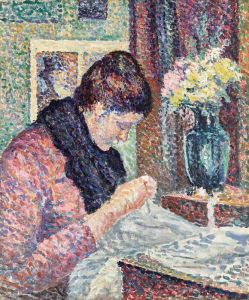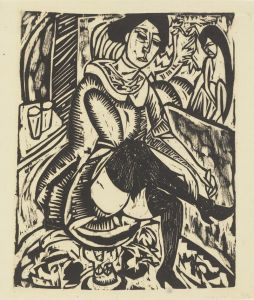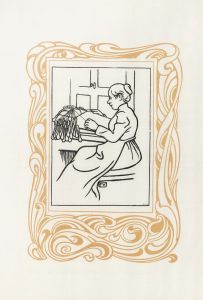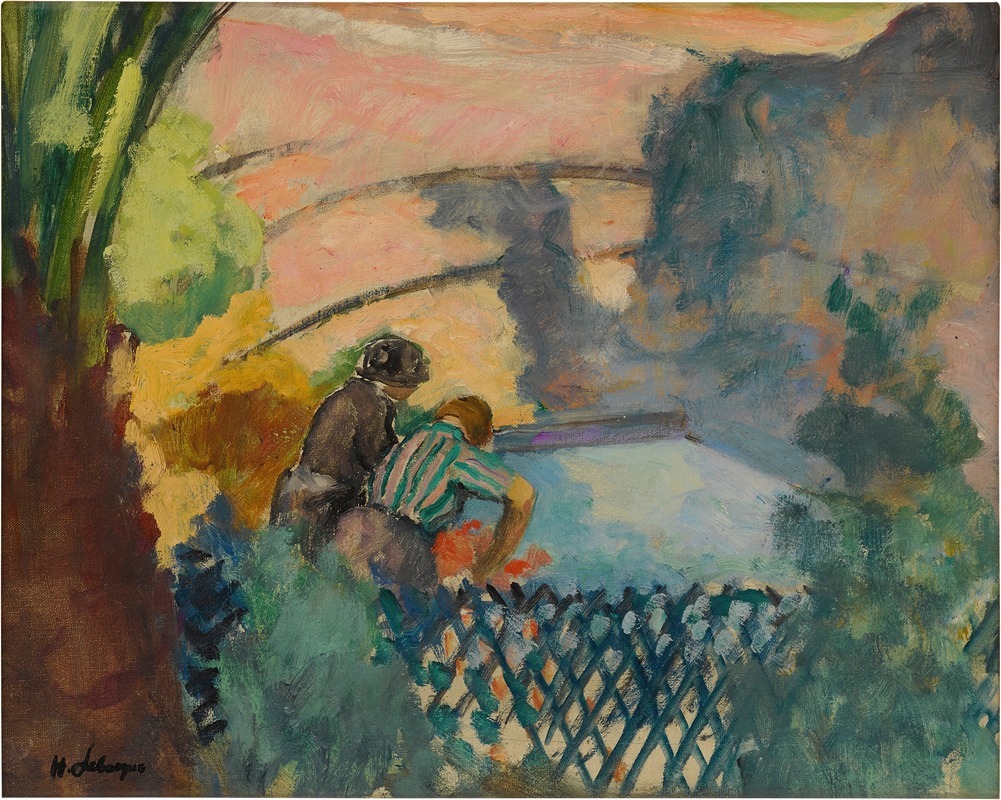
Deux femmes au lavoir
A hand-painted replica of Henri Lebasque’s masterpiece Deux femmes au lavoir, meticulously crafted by professional artists to capture the true essence of the original. Each piece is created with museum-quality canvas and rare mineral pigments, carefully painted by experienced artists with delicate brushstrokes and rich, layered colors to perfectly recreate the texture of the original artwork. Unlike machine-printed reproductions, this hand-painted version brings the painting to life, infused with the artist’s emotions and skill in every stroke. Whether for personal collection or home decoration, it instantly elevates the artistic atmosphere of any space.
Henri Lebasque (1865-1937) was a French post-impressionist painter known for his vibrant use of color and light. He was associated with the Fauves and was influenced by the works of Pierre-Auguste Renoir and Camille Pissarro. Lebasque's works often depicted intimate domestic scenes, landscapes, and still lifes, characterized by their joyful and serene atmosphere.
"Deux femmes au lavoir" (Two Women at the Washhouse) is one of Lebasque's notable paintings. Created around the early 20th century, this painting exemplifies his mastery in capturing everyday life with a sense of tranquility and warmth. The painting portrays two women engaged in the act of washing clothes, a common domestic chore, which Lebasque elevates to a subject of artistic beauty.
In "Deux femmes au lavoir," Lebasque employs a soft and harmonious palette, using gentle blues, greens, and earthy tones to create a soothing and balanced composition. The figures of the women are rendered with a sense of grace and fluidity, emphasizing their movements and the natural rhythm of their work. The background, likely depicting a rural setting, is treated with loose brushstrokes, giving it a slightly blurred effect that contrasts with the more defined forms of the women.
Lebasque's technique in this painting reflects his interest in light and its effects on color. The way he captures the dappled sunlight filtering through the trees and illuminating the scene adds a layer of depth and realism. This attention to light and shadow is a hallmark of his style, contributing to the overall impression of calm and contentment.
The subject matter of "Deux femmes au lavoir" is indicative of Lebasque's focus on the simple pleasures and routines of everyday life. By choosing to depict ordinary women engaged in a mundane task, he highlights the beauty and dignity inherent in daily activities. This approach aligns with the broader post-impressionist movement, which sought to find meaning and aesthetic value in the commonplace.
Henri Lebasque's works, including "Deux femmes au lavoir," are celebrated for their ability to convey a sense of peace and happiness. His paintings often evoke a nostalgic longing for a simpler, more harmonious way of life. Today, Lebasque's art continues to be appreciated for its lyrical quality and its celebration of the human experience.
"Deux femmes au lavoir" is housed in private collections and has been exhibited in various galleries and museums, contributing to the appreciation of Lebasque's contribution to modern art. His legacy is marked by his ability to infuse his subjects with warmth and vitality, making everyday moments resonate with viewers across generations.






